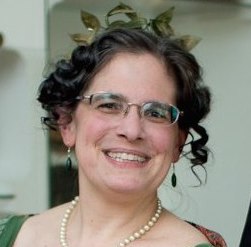In 1914, Victor Records made a celebrity-endorsement deal with Vernon and Irene Castle, “the greatest exponents of Modern Dancing who supervise the making of Victor Dance Records”. The company put out a little booklet, Victor Records for Dancing, which included short instructions for various couple dances (including the brand-new foxtrot) plus an enthusiastic note from Vernon Castle about the superiority of Victor records and the indispensibility of the Victrola in teaching classes.
The instructions for each dance were accompanied by a convenient list of suitable Victor recordings. Tucked at the end of the book were instructions for a country dance and a Paul Jones circle mixer “as taught at the Castle School of Dancing, New York City”.
In the past, I’ve discussed a very simple 1903 two-step circle mixer and a more complex English Paul Jones from the 1920s. The Castles’ version is quite similar to the 1903 one, but it’s physically rather livelier while mentally less taxing; the dancers don’t have to count.
Here’s the pattern:
8b Slipping circle to the right
8b Slipping circle to the left
?? Grand right and left (starting right hands to partner) until signal given
?? Dance with the person you are facing until signal given
Re-form the circle and repeat all of the above until the music ends.
The Castles helpfully confirm that “As the time for changing is optional, the signal, which is usually the blowing of a whistle, is left to the discretion of the director of the dance.”
The reconstruction is fairly straightforward, but there are a few minor issues:
The printed instructions mistakenly list “grand right and left changing to counts of 8 measures”, which I believe was more likely intended to be “counts of 8”, or four counts per change of hands, which is a typical pace for a grand right and left. It has to be some sort of error, since there is no exact duration for this figure; it goes until the signal is given.
The circles are described as “all slide to right chassé” and “Repeat to left chassé”; in practice, this is a “sixteen-slide galop” in each direction. That’s a lot of slipping, so it wouldn’t bother me particularly if it were cut to four measures each direction in practice.
The slipping is a little tricky to manage when coming back together after dancing with a partner; any laggard dancers cannot easily join in without getting mowed down. A signal by the director of the dance to tell the dancers when to start slipping is probably going to be required. Making sure to signal to reform the circle with at least two measures’ lead-time before the end of a phrase will help let the dancers get into position ready to start with the musical phrase. Four might be safer.
The slipping circle starting to the right is weirdly reminiscent of the opening “grand round” change of an 18th-century French cotillion, though in no other respect does this dance resemble “Le Paul Jones”, an unexceptional cotillion from the 1770s with no mixer element.
For music, dancer were referred to the lengthy list of “Victor Records for the One Step”, but the Castles also noted that “The One-Step is generally used for the Paul Jones…but the Fox-trot, Canter or old-fashioned Waltz may be used.” In practice, an “old-fashioned waltz” would presumably require canter (1…3) rhyhm in the slipping circles, which would make for a much gentler dance.
It being the year for 1914 centennial balls, a Paul Jones is something to consider for a ball program, especially early in the evening, in order to break down social barriers and allow strangers to meet.

Leave a Reply